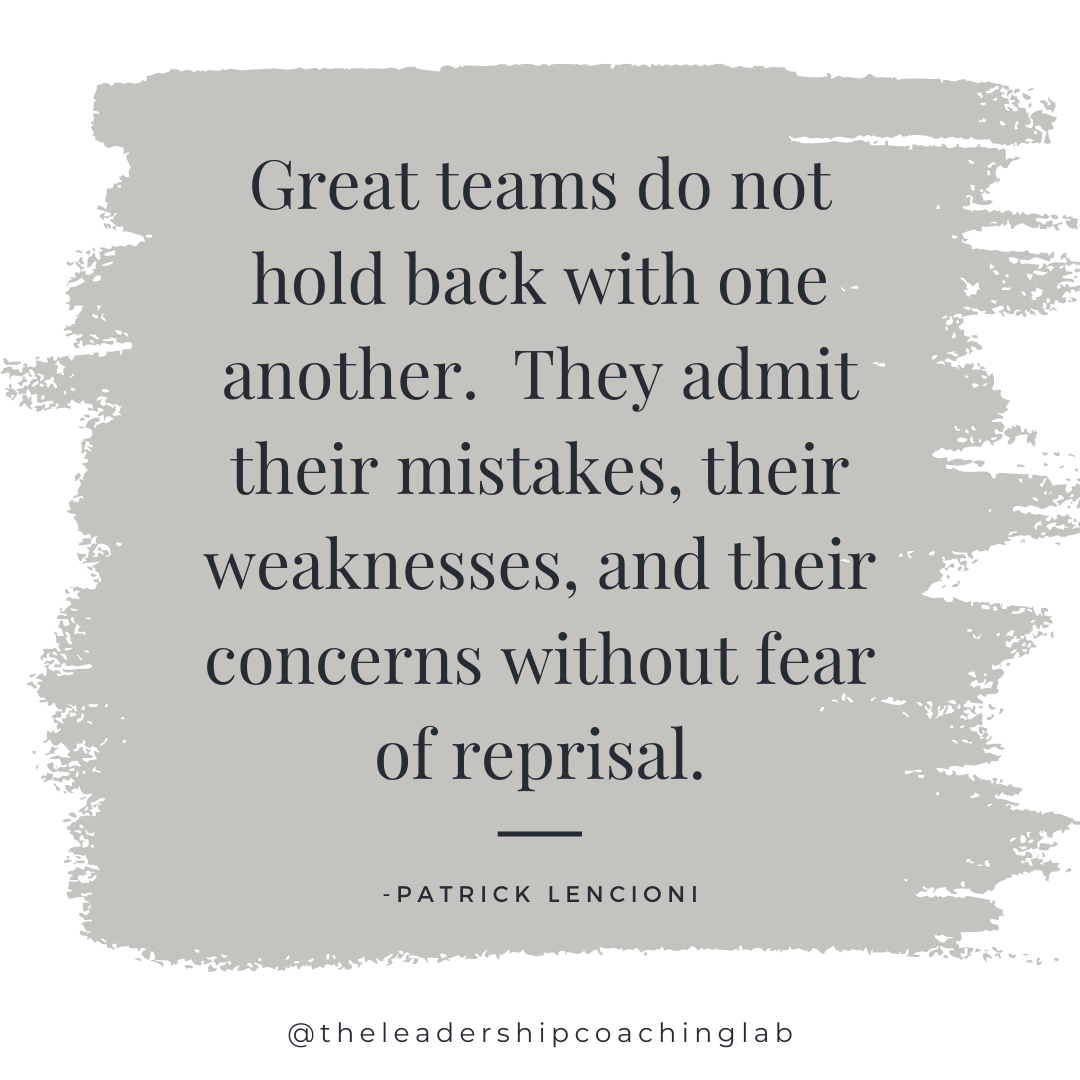3 Tools to Develop a Thriving Team
What do you need to take your team to the next level?
“Teamwork is the secret that makes common people achieve uncommon results.”
You’ve likely at some point been on THAT team … the team that is struggling, dysfunctional, or disengaged. Maybe you are currently either a leader or member of a team that is frequently thwarted by distracting dissensions or frustrated by a lack of progress.
Which of these toxic team dynamics have you experienced?
___ No one will speak up and say what they really think.
___ One or two people repeatedly dominate the team dynamic.
___ The team leader dismisses team member opinions and perspectives.
___ Team meeting time seems unimportant and obligatory.
___ Communication between team members is confusing or chaotic.
___ Team members do not consistently follow through with tasks.
Teams are fragile entities - they can be powerful vehicles for mission achievement, task accomplishment, and relationship building. But unifying and supporting a diverse group of people is a complex and challenging process. There’s no magic formula to curb team dysfunction, but there are tools that can be used intentionally to create more healthy group processes.
What tools do you need to further develop your team’s potential?
Three Tools to Develop Teams that Thrive
1 - Take a Strengths-Based Approach
Taking an individual strengths assessment such as the Clifton StrengthsFinder is a great way to identify each team member’s best contribution. In mapping out each other’s strengths, you help each person to excel in a strategic role - and this can have a profound effect on individual contributions. One research study from Gallup demonstrated that when team members intentionally developed their strengths at work, their engagement increased from 9 to 15%.
By aligning individual strengths to certain tasks, you create more clarity about team roles - who is doing what - which is vital to increase team performance. With use of a strengths assessment, you also help to build valuable team trust and camaraderie. When we understand more about someone’s unique approach, we are more likely to recognize and appreciate the unique perspective and skill set they bring to the group.
Tip: If you can’t afford to invest in the Clifton Strengths Finder, consider these free alternative strengths assessments: VIA Character Strengths Survey or the Standout Assessment designed by Marcus Buckingham.
If everyone on your team has taken the Clifton StrengthsFinder assessment, you can analyze your team’s collective strengths using the Four Domains of Strengths. Read these tips for using a Strengths Grid with your team.
2 - Ask Appreciative Questions
Another practical tool to develop a thriving team is to regularly ask appreciative questions when problem solving and planning as a team. Appreciative questions are designed to intentionally explore positive experiences and successes for future application:
What is the best part of our team experience?
What is working well with our current plan?
What has been successful for us in the past?
Identifying and cloning the “bright spots,” as authors Chip and Dan Heath explain in their book Switch: How to Change Things When Change is Hard, can help your team strategically leverage your strengths to address current and future challenges. In fact, some research shows that team building sessions which focus on exploring team members’ best experiences can serve as an effective intervention to improve both team process and team outcomes.
3 - Build Your Team’s Psychological Safety
Research conducted by Amy Edmondson has demonstrated the importance of psychological safety to team effectiveness, which she defines as: “a shared belief held by members of a team that the team is safe for interpersonal risk taking.”
Teams with high psychological safety create spaces in which team members feel comfortable to:
Ask questions (without appearing ignorant)
Admit mistakes (without being perceived as incompetent)
Seek feedback (which won’t be viewed as intrusive)
Give constructive feedback (which won’t be seen as negative)
So, how can you increase psychological safety? Try these two starter strategies:
The team leader needs to intentionally model psychologically safe behaviors (admit mistakes, seek feedback, etc.). See Amy Edmondson’s TED Talk for more leadership strategies.
The team should collaboratively brainstorm group norms designed to promote psychologically safe behaviors. For example, a team could decide to reserve 15 minutes of a meeting to ask questions or seek / give feedback about current priorities or projects. Charles Duhigg shares more about developing intentional group norms in his article What Google Learned From Its Quest to Build the Perfect Team.
Tip: Check out Google’s re:Work Guide which provides more details and resources for building psychological safety on teams.
Get the Complete Toolkit to Inspire Growth & Change
Get my free 60-page ebook featuring my 8-step process for growth and 80 powerful questions for coaching or reflection - designed for leaders, coaches, & personal growth enthusiasts.
You'll also join 2,000+ professionals who receive The Coaching Mindset, my newsletter for practical tips to inspire intentional growth and tools to take a coach approach.





